[Review] Star Ocean: The Divine Force
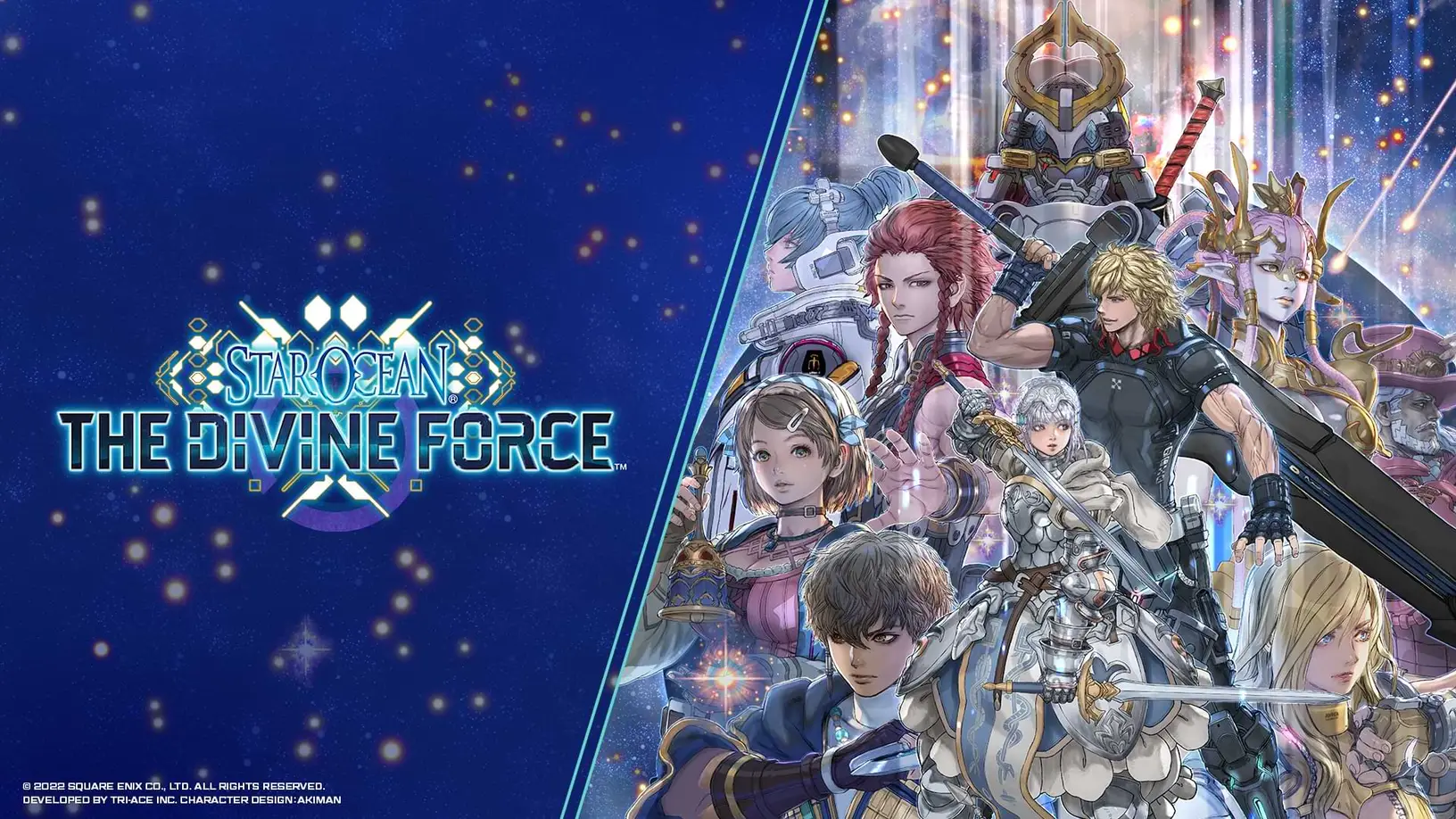
Akira Yasuda produced some stellar artwork for the game - it's a shame none of it actually appears in-game.
Star Ocean: The Divine Force is tri-Ace’s 6th entry in the mainline Star Ocean series and it’s... An interesting work to examine, to say the least. Coming in the wake of the rather tepidly received Star Ocean: Integrity & Faithlessness, The Divine Force seems to be trying to play things safer as it calls back to many aspects of the series’ most celebrated entry, Star Ocean: The Second Story, while also adopting gameplay features from other popular contemporaries such as the Tales Of series. Probably the most notable returning feature from The Second Story is the ability to choose between two characters to serve as the player’s point-of-view character for the story. Raymond Lawrence, a cargo starship captain from the non-Federation planet of Verguld, and Laeticia Aucerius, crown princess of the Kingdom of Aucerius; a dichotomy very reminiscent of The Second Story’s Claude C. Kenny and Rena Lanford.
Whether it succeeds in recapturing the glory of The Second Story... Well, that's another matter entirely, so let's get into the nitty-gritty of it all.
Story
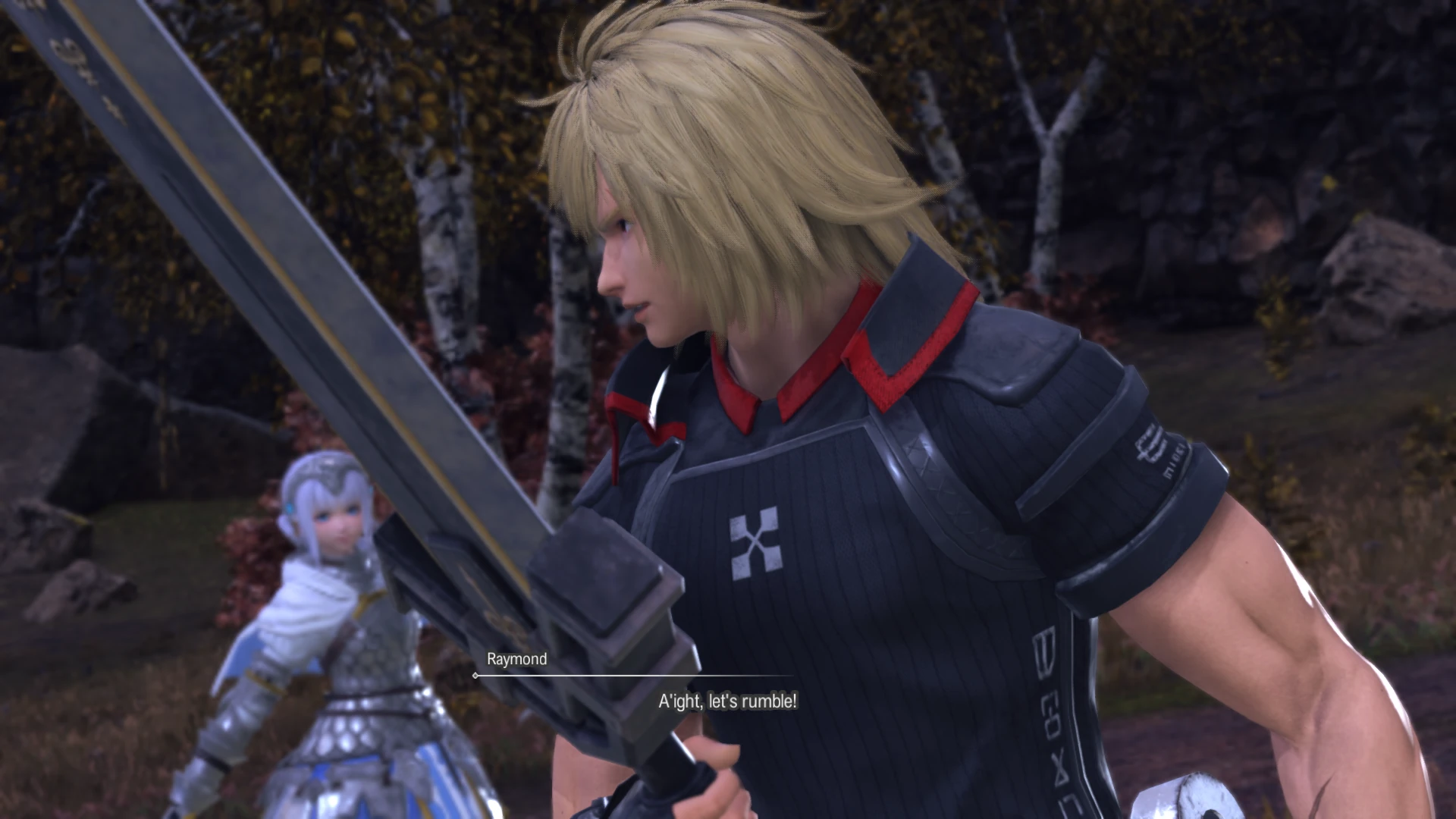
An energetic opening gives the game a lot of initial momentum.
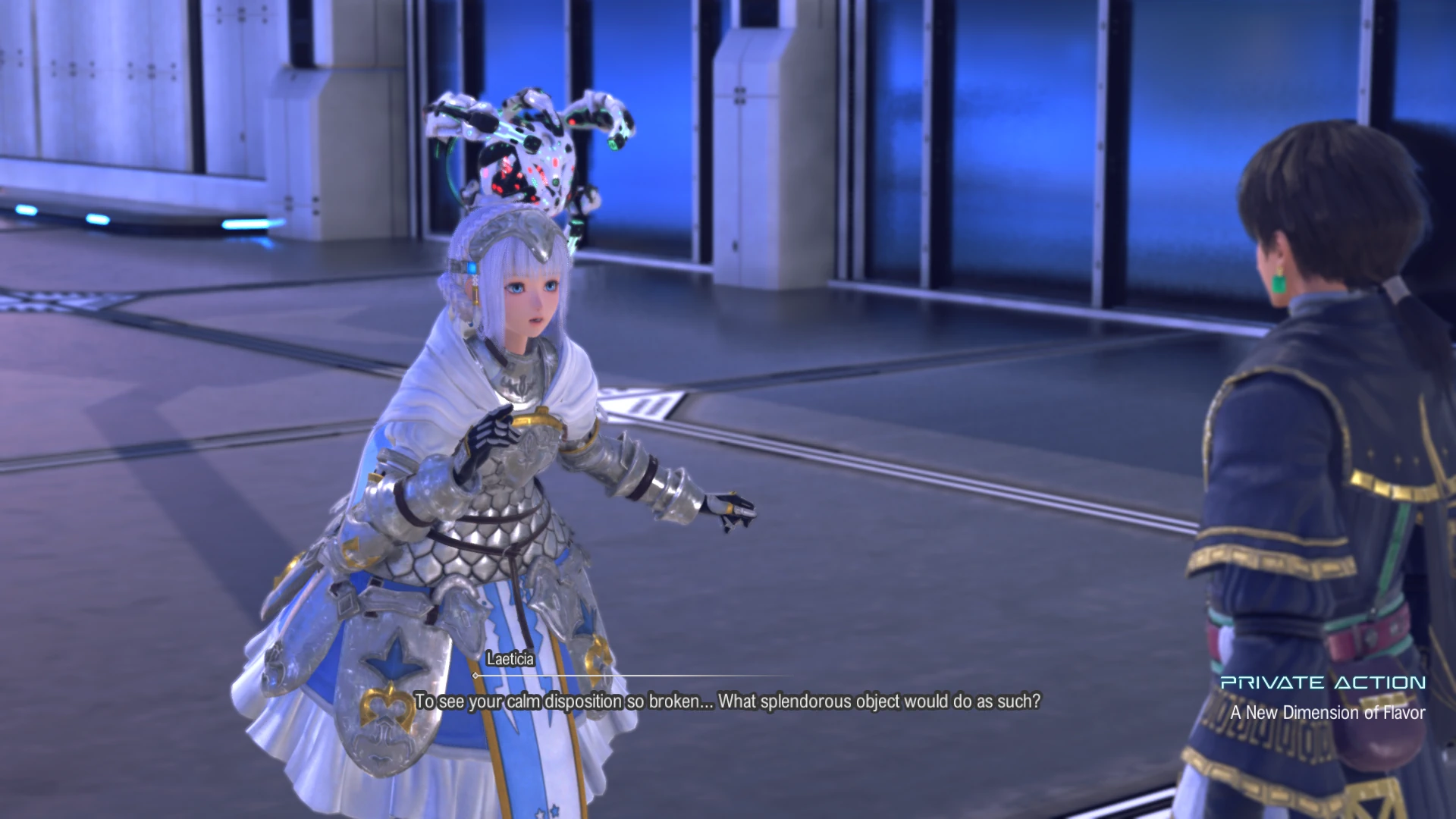
Private Actions return and give the player a lot of chances to explore the party's personalities in calmer moments.
Star Ocean 6 opens with the Verguldian merchant vessel Ydas being shot down without warning by a Pangalactic Federation battleship while on a cargo run. Jettisoning via escape pods, the crew of the Ydas are seperated as they crash land on Aster IV. Raymond comes down near the campsite of the crown princess, who is out on a quest with her retainer Albaird to find allies to aid her kingdom against the looming threat of invasion by the Vey’l Empire. Unable to find his crew and with no knowledge of the state of the planet, Raymond teams up with the princess and our adventure kicks off from there.
As a hook for a story, it’s pretty solid – we’ve got a mystery regarding why the previously benevolent Federation is suddenly shooting down civillians, we’ve got that classic sci-fi/fantasy clash that’s been a staple throughout the series, and we soon get clues that there’s other extraterrestrial interference taking place on Aster IV. Unfortunately, as good as the general plot outline is for most of The Divine Force, it often fumbles its deliveries. Pacing and passage of time are often managed very poorly, some character motivations just don’t make sense upon their reveal, and the story as a whole declines in quality as you draw closer to the end. It’s rather ironic that the game is probably at its strongest before it moves its focus off of Aster IV and into the Star Ocean itself.
Now that probably comes off as pretty damning, but there are still some pretty good sides to The Divine Force’s narrative – I found pretty much the entire party to be very fun and likable characters with good chemistry between them. The series staple Private Actions return once again allowing the player to take part in downtime conversations with the various characters when not out adventuring and these often see characters get fleshed out quite a bit. From the will-they-won’t-they relationship between eccentric inventor Midas Felgreed and Trathen tribal leader Malkya to the teasing of childhood friends Laeticia and Albaird, most every character gets to show off their personality to a solid degree.
Raymond and Laeticia generally both play well off each other and for MOST of the game each feels like they own the role of main protagonist as much as the other does, though that holds less true come the final sections of the game where Raymond feels much more in charge of proceedings. The only character who I feel has been particularly poorly written is D.U.M.A, a strange combat drone-like entity encountered early in the game who the cast are supposed to have grown quite fond of throughout the course of the game, but this doesn’t feel particularly earned owing to D.U.M.A lacking any real personality for most of the game, especially with how few lines it has compared to every other character.
Overall, the value of The Divine Force’s story lays far more in the journey than in the payoff – spending time with its colourful cast and watching them interact and react to the happenings from their very different perspectives of life is enjoyable, but the story underpinning it all fails to deliver a particularly satisfying finale.
Gameplay
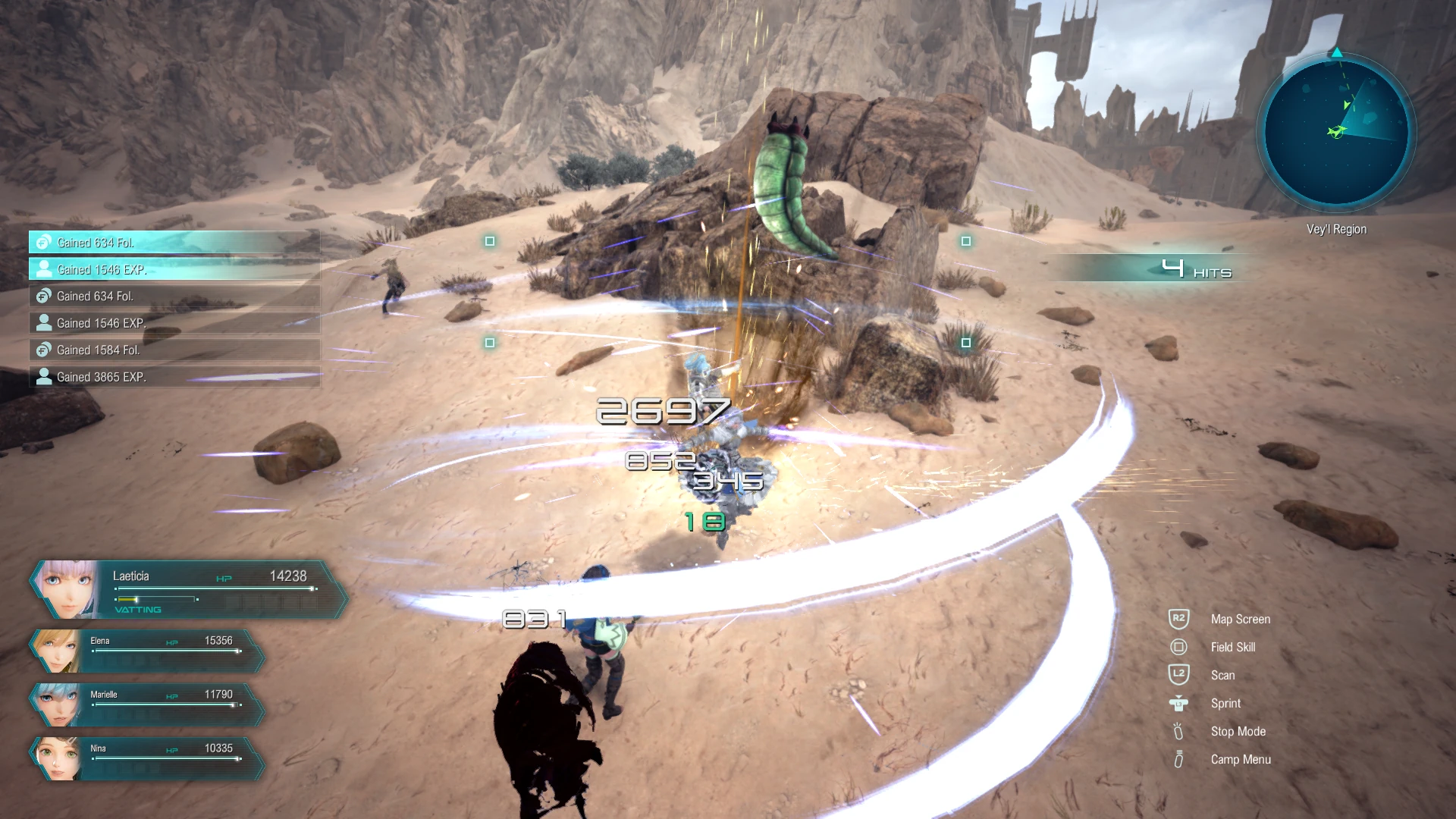
Combat is fast, frenetic, and fluid.
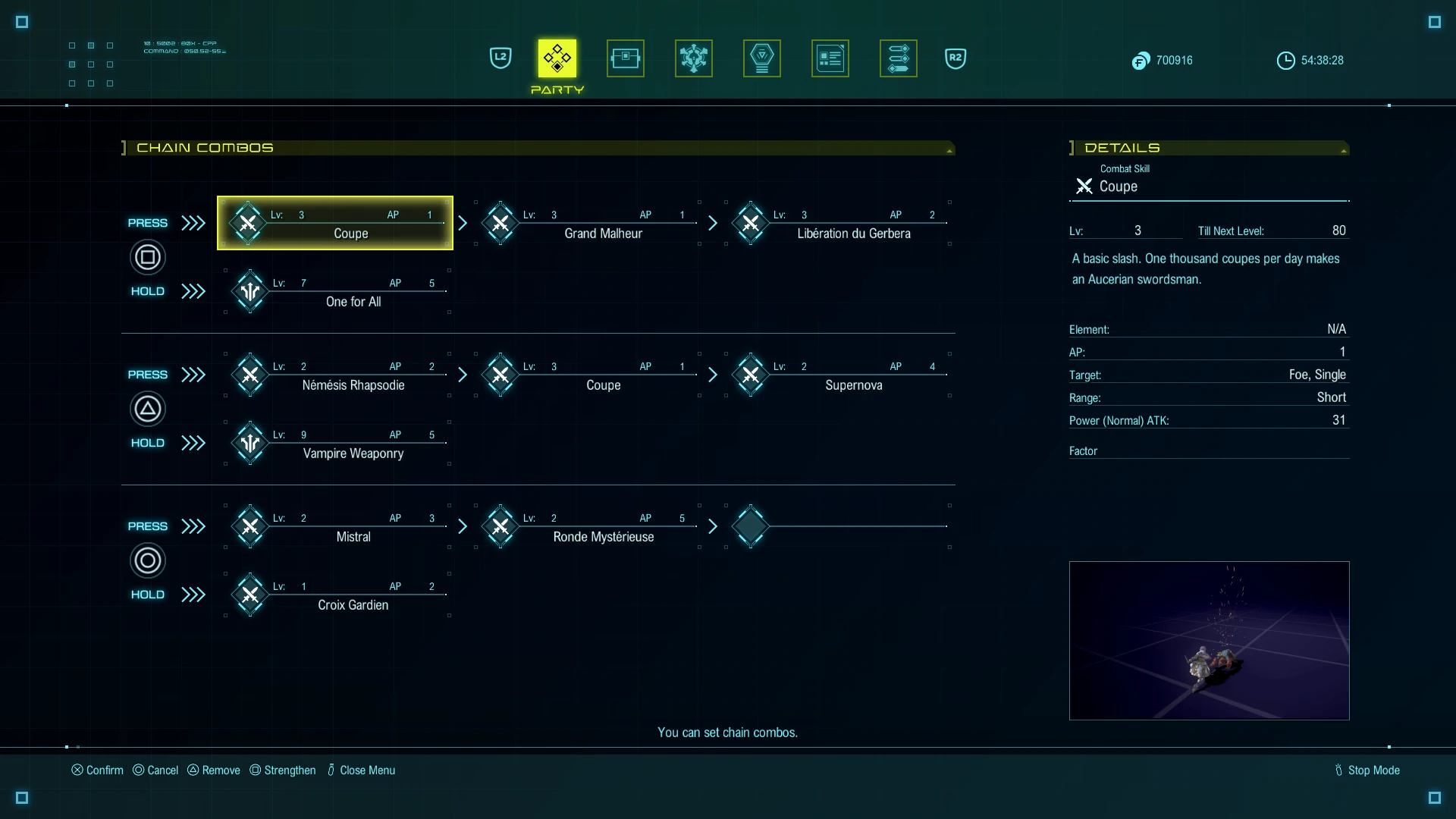
The new chain combo system allows a lot of customization of each character's fighting style, though it does feel like spellcasters and active ability users get the short end of the stick.
The Divine Force’s combat is a pretty big departure from previous games in the series, eschewing its former systems of basic attack buttons, assignable skill buttons, and a pause menu for magic, and instead switching to a system just like Tales of Berseria featuring customizable one-button three-move combo strings (specfically the Square, Triangle, and Circle buttons) with an additional ability mapped to a long press of the button while a regenerating pool of Action Points (AP) limit the player’s ability to spam attack chains endlessly. While this certainly helps create a more fluid combat system with less stoppages in the action, I feel it ultimately narrows a lot of the options for magic-focused characters or those with a wide variety of active skills, forcing them to either awkwardly insert buff abilities into the middle of their combos or heavily weigh opportunity costs for slotting certain abilities. Still, every character possesses a very unique combat style, and the ability to freely control any character you wish in combat means there's a great deal of variety in gameplay options.
Another new element added to combat is an increased focus on aerial combat. D.U.M.A, the aforementioned combat drone encountered early in the game, gives the player access to a number of new abilities, the most important of which is the Vanguard Assault. Lifting the player character up into the air (and providing a defensive barrier while its held), the player can then perform an aerial rush attack. If the player changes the angle of this attack mid-flight in a way that moves out of the enemy’s point of view, they’ll blindside the enemy, temporarily stunning the enemy and leaving them extra vulnerable to attacks, much like its previous incarnation in Star Ocean: The Last Hope.
While this should simply be a neat mechanic that adds more options to the combat loop, the way AP works in the game and its reliance on blindside becomes more of an annoyance instead. By default, the player’s AP pool is only 5 pips – a piddly amount that only the most basic of combo strings can be performed with. To increase the amount of AP available, the player must successfully perform a blindside and land attacks on the stunned enemy to increase it up to a maximum of 15, however that maximum can be reduced again by taking hits that cause the character to flinch or by resting at an inn. What makes this frustrating is that many enemies and most bosses (when not enraged) are immune to blindsides entirely, meaning that entering a fight without max AP can leave the player stuck using weak attacks for extended periods of combat. Exacerbating the above issue is that a lot of the late game bosses are incredibly spongey, possessing large pools of HP and not enraging for quite some time, leading to some thoroughly tedious boss fights.
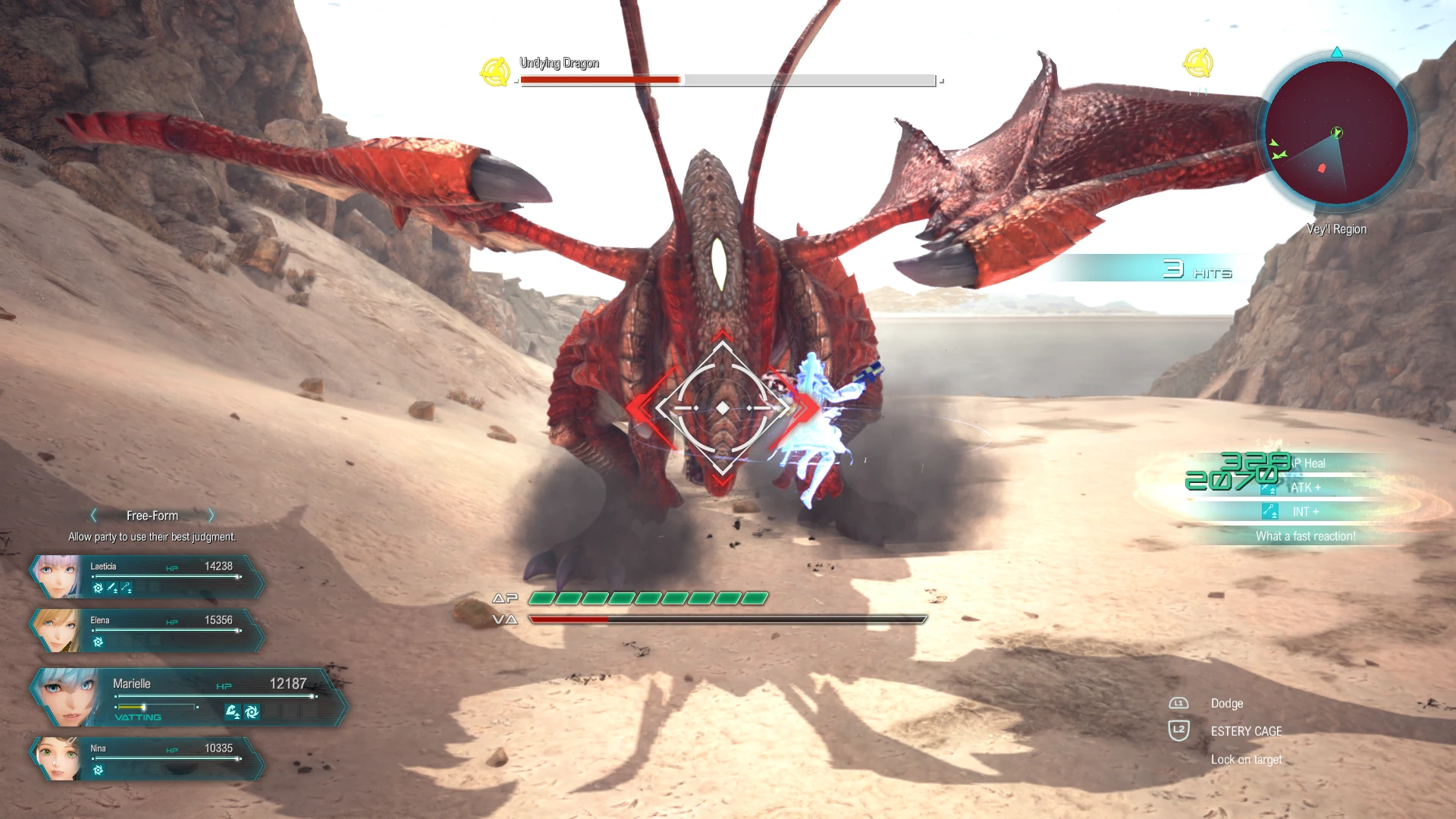
Features like Vanguard Assault add a lot of verticality and movement to the combat.
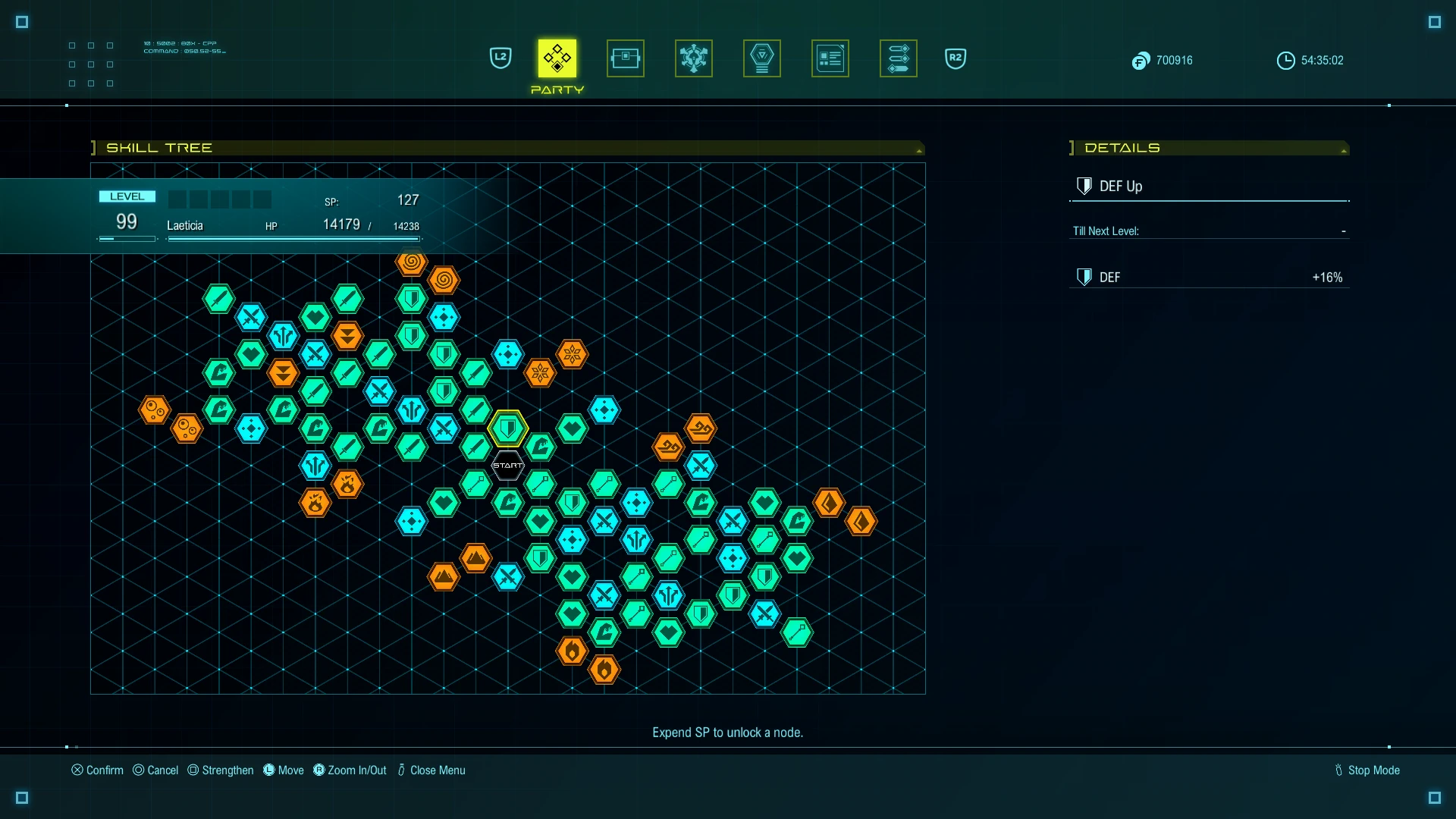
Large skill trees allow you to focus on which particular strengths of a character you want to enhance as you level up.
The process of levelling and strengthening your characters however is pretty decent, as not only do their stats increase as you level up, but with the Skill Points (SP) you earn from levelling up you can also further shape that character’s development by spending them on nodes from their unique skill trees and by spending them to increase the power of particular skills. Some characters such as Elena get quite creative with their trees as well – because she’s an android, her skill tree is simply built as 4 straight lines, each a line of a single different stat, allowing the player to build her towards whatever role they need her to fill at that time.
Outside of combat, the party will find themselves traversing a psuedo-open world composed of large spaces that connect into one another, often with crafting materials scattered around as well as floating purple crystals which can be collected to spend on upgrades for D.U.M.A. Enemies wander the overworld and attacking them or being spotted by them makes the party seamlessly enter combat. While this makes for a more natural exporation-combat transition by doing away with the traditional transition to a battle screen of older RPGs, it imposes a lot of restrictions on just how the developers can shape the world and can lead to some frustrations in battle as enemies get caught on scenery, fall off ledges and respawn, or the player accidentally ‘escapes’ the battle because they moved out of the enemy’s combat area while performing an attack.
D.U.M.As abilities can also be used outside of combat, allowing the player to send themself soaring through the air at will. The game rewards the player for exploring odd rooftops and ledges with these powers, often hiding bonus items and D.U.M.A upgrade points up in these areas and even leading into little secret areas with treasure or a bonus enemy in some dungeons. Certain overworld maps also contain optional boss battles against colossal enemies, most of which are unique and not reused battles from the main story. When it comes time to tackle dungeons, unfortunately the game also comes up lacking. Most dungeons in the game are pitifully short and barely all that different from traversing some areas of the world. Personally I’m actually not against shorter dungeons as I find some long dungeons in games can really overstay their welcome, but this is just too far in the opposite direction.
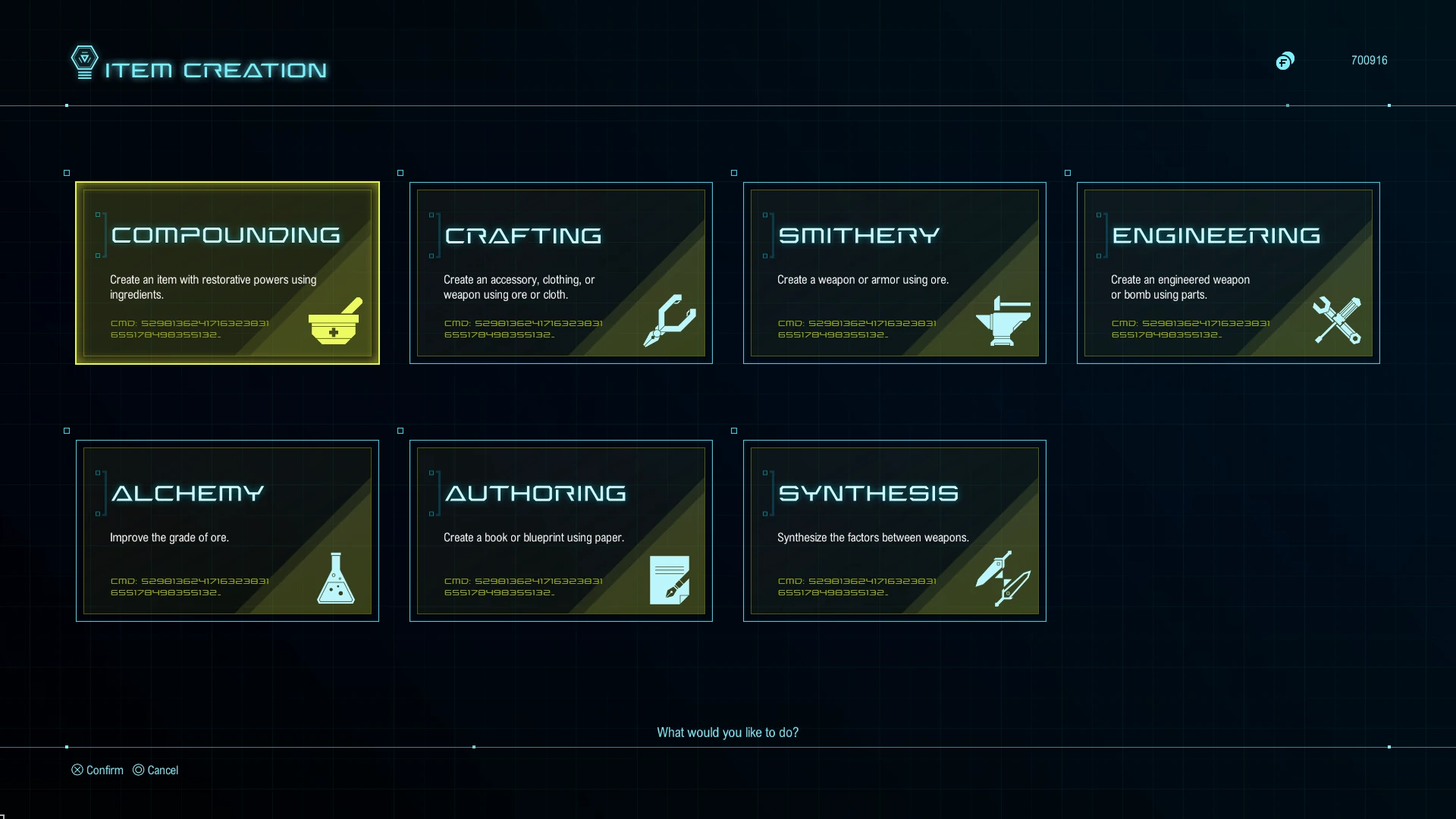
Item Creation is something of a chore to engage with unless you use an online guide, but at least there's a lot of variety.
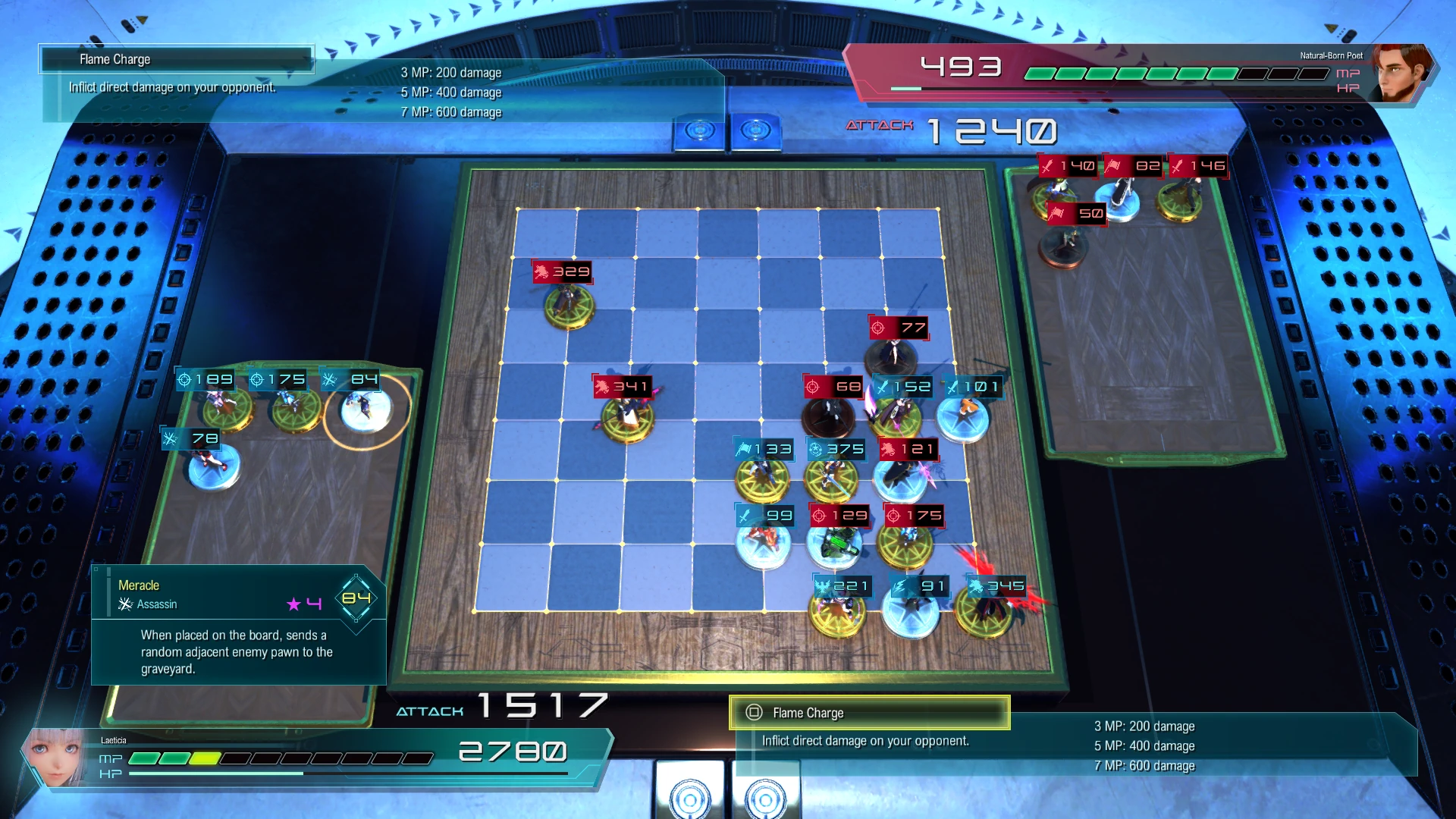
E'sowa actually makes for a pretty fun diversion if you're into board games.
Keeping with the classic series tradition of having a bunch of non-combat skills to explore and improve as well, Item Creation makes a return once more. Unfortunately this is yet another part I have nothing but criticism to heap upon – most of the different types of Item Creation are incredibly RNG dependent for what you get out of them, often requiring you repeat the process many times over to get the items you want. This only serves to make the process more aggravating, for every time you want to craft a single item, a pointless cutscene of swirling light plays and skipping it causes the entire screen to flash white. This was so irritating for my eyes I’d often turn my head away from the screen entirely. The only crafting system I really felt any satisfaction using ended up being Compounding, which owing to taking two ingredients for its recipes allowed you to make particular items with far less RNG involved.
Probably the last gameplay feature to note is E’Sowa, a boardgame the player can play with many NPCs throughout the game in the spirit of other RPG minigames such as Final Fantasy VIII’s Triple Triad. The different unit types and their abilities actually make for a rather fun game, however the eventual realisation that eventually just collecting pawns with larger attack values is all there is to beating stronger opponents later in the game detracts from it all a little. Still, it’s cute to see so many classic series characters appear as collectable pawns – just don’t question why they’re so widespread across a planet that’s still at a medieval tech level.
Graphics
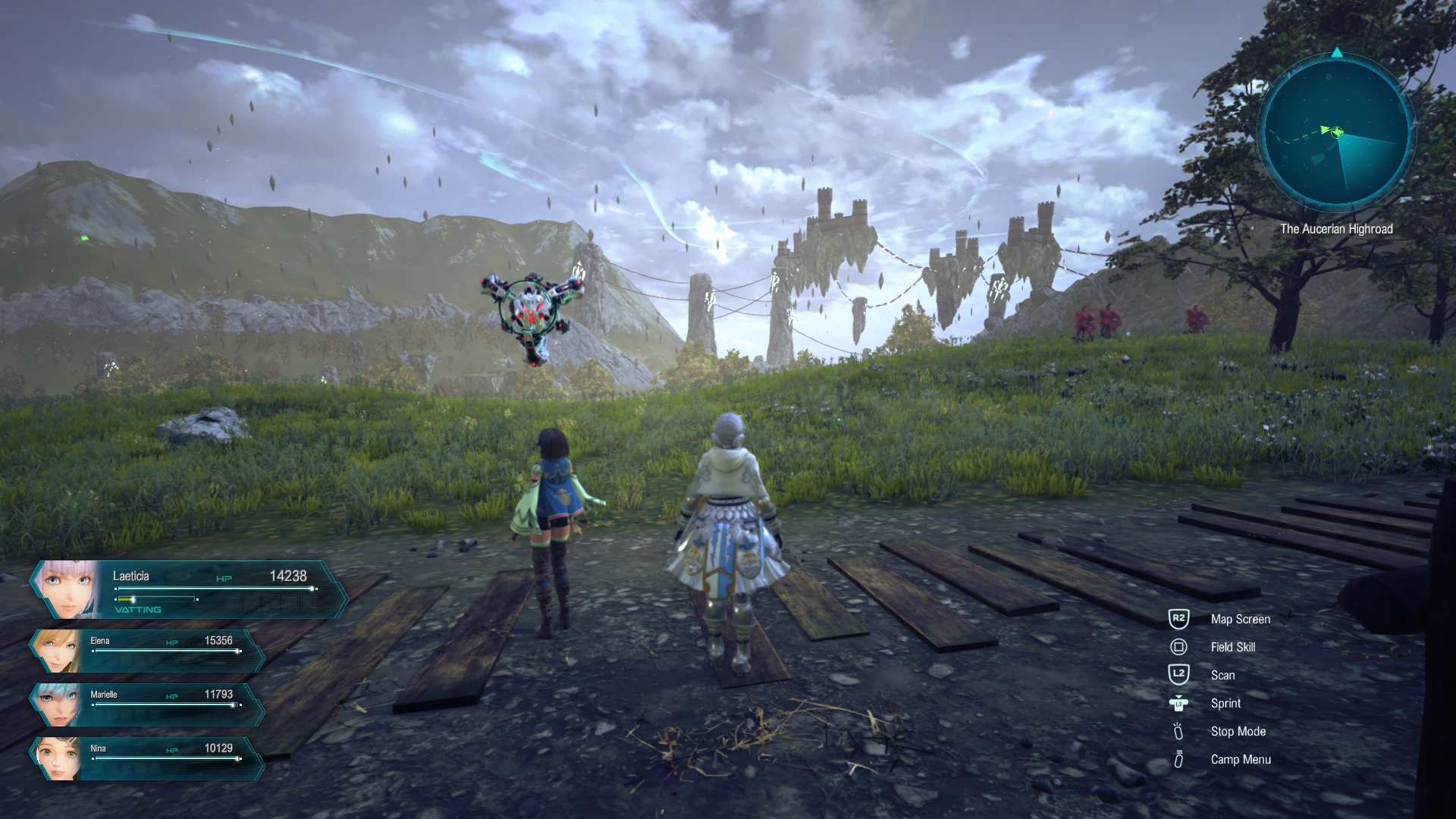
Some areas of Aster IV can be quite the visual treat.
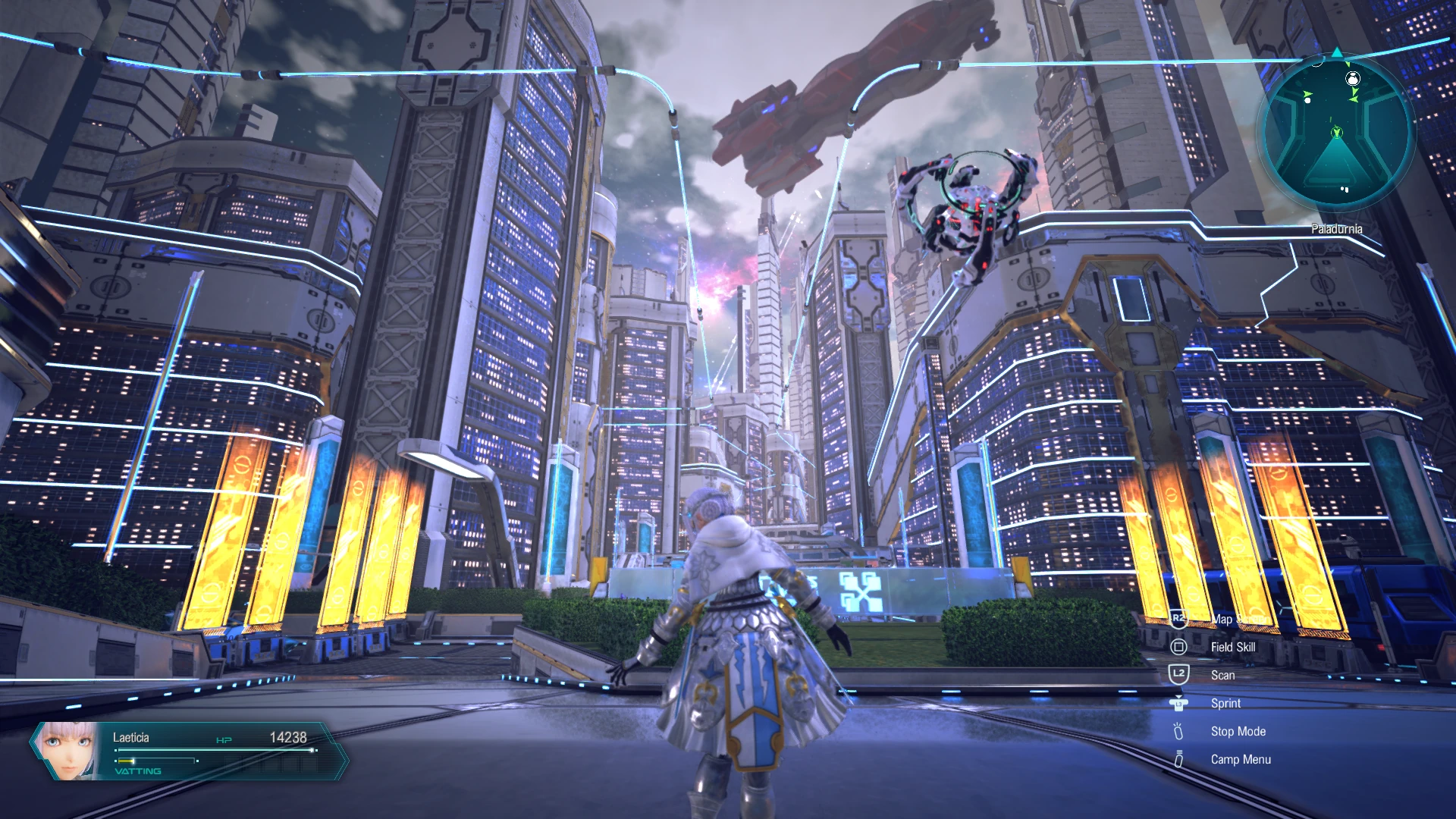
The futuristic areas make for some of the game's most visually impressive areas - unfortunately you won't be visiting many.
There’s something odd about the way Star Ocean 6 looks. From the character models my friends have described as looking akin to the uncanny art style utilized in Jump Force to the annoying blurriness and bloom present throughout the world. There’s an inconsistency between character faces with some seeming to go for a stylized anime look while others adhere to a more realistic human facial structure.
I’d probably attribute the blurriness to a poor implementation of Temporal Anti-Aliasing as was the case with Monster Hunter World, but unlike World it seems that there’s no way to properly turn it off as the game offers the strange, non-specific options of Low, Medium, and High for anti-aliasing. Even installing mods to attempt to alleviate this issue didn't entirely remove the blurriness. On the topic of mods, The Divine Force also falls afoul of a common mistake with console-to-PC ports: only including prompts for a single controller type. By default there's only support for Xbox controller icons, so Playstation controllers will require the usage of a mod to get their proper icons. Hardly a dealbreaker, but an annoyance nonetheless.
The world as a whole in The Divine Force seems to be striving for some level of photo-realism, but I feel that owing to the game’s weird lack of adherence to any particular art style it makes the game feel cheaper as a result. Enemies also fail to stick out against the environment a lot of the time as well, particularly in very bright or foliage covered areas – not a great feature in a game that wants to reward players for well-timed dodges and taking advantage of enemy bearings. That’s not to say there aren’t any pretty environments however – some of the vistas near the capital of Aucerius are really quite pleasant and the sci-fi environments also tend to have a lot of character. The few scenes of battles between starships are often quite well animated too, even if they’re quite brief.
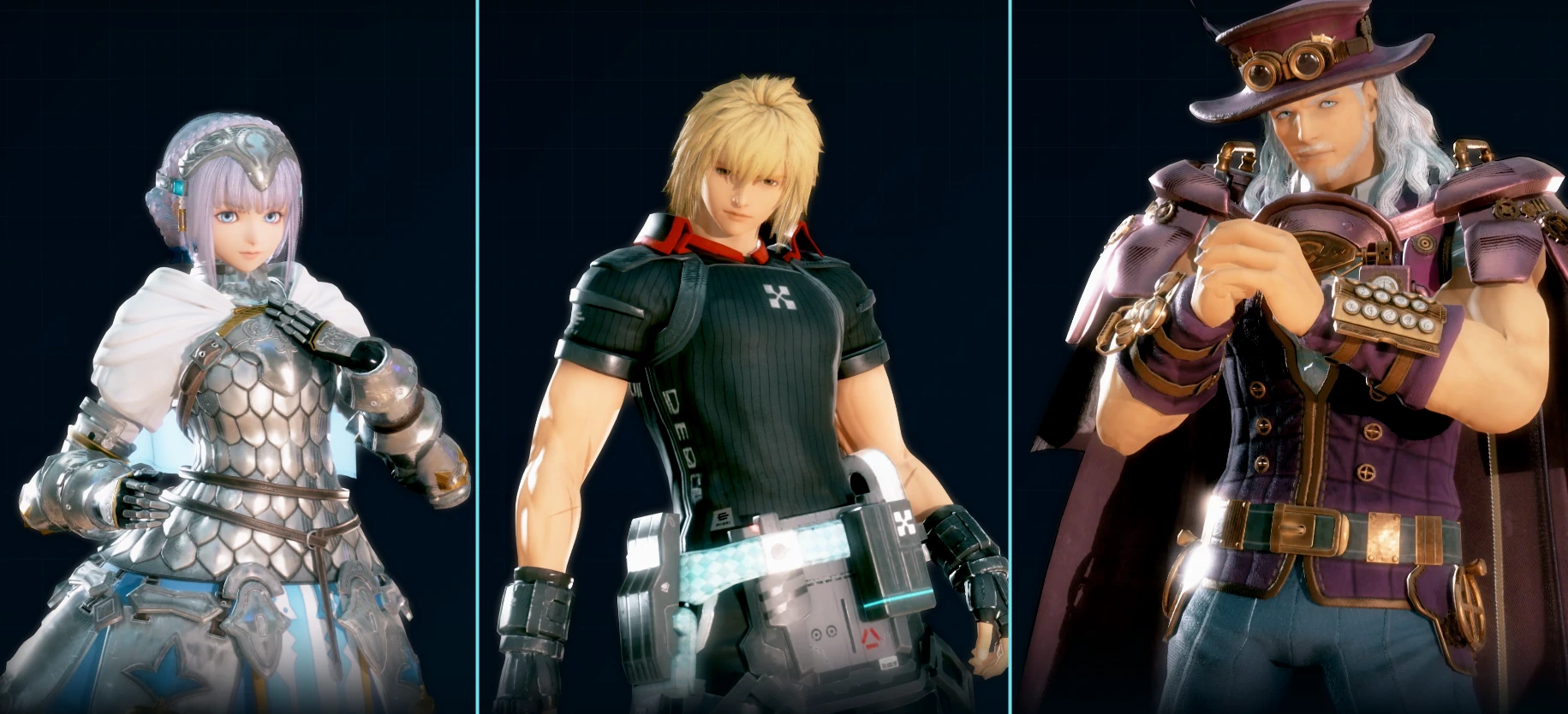
Even between party members I can't help but feel there's an inconsistency in art style.
Audio
With series composer Motoi Sakuraba returning, the soundtrack for The Divine Force is pretty solid, even including unique battle themes depending on which protagonist the player chose. Its well constructed and carries the mood perfectly well. Each character even has unique themes, with Raymond's tracks having a rock motif while Laeticia has more bombastic orchestral pieces, a nice detail that adds to the feeling of it being the chosen character's story. The game’s variety of boss tracks is almost better than the variety of actual bosses, heh.
The English dub is also pretty competently cast, with most characters having appropriate voices and accents and not just falling back on a flat cast of generic American anime dub voices which so many older games are guilty of. Despite this, I still found myself eventually switching to the Japanese dub mostly due to the awkward mismatch of body language with the dub at times – in particular Nina, the party healer, is quite emotive when she’s speaking but her body language is pretty tightly coreographed with the cadence of how she speaks in Japanese so she often looks quite strange in scenes with her English dubbed voice.
Conclusion
Throughout this review, it’s probably seemed like I couldn’t say a good thing about this game without immediately segueing onto some niggle I had with it, and honestly I think that’s a pretty metaphor for the game as a whole. The story experience is fun to play through, but the payoff isn’t that great; the combat is fast and fluid, but a bunch of the associated systems are irritating; and that’s kind of just how Star Ocean The Divine Force is, and I don’t hate it for that. Even days after finishing it off, it still has me thinking about it – both for its positives, its negatives, and its what-could-have-beens – and ultimately I suppose that’s much better than just being forgettable. Hopefully one day we’ll get a truly great Star Ocean game once again, but for now we have The Divine Force, and as imperfect as it is, I can say I at least had fun with it.







